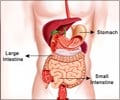The origin of the 1918 pandemic flu virus and its unusual severity, which resulted in a death toll of approximately 50 million people may have been solved.

"Ever since the great flu pandemic of 1918, it has been a mystery where that virus came from and why it was so severe, and in particular, why it killed young adults in the prime of life," said Worobey, a professor in the UA Department of Ecology and Evolutionary Biology. "It has been a huge question what the ingredients for that calamity were, and whether we should expect the same thing to happen tomorrow, or whether there was something special about that situation."
Worobey and his colleagues developed an unprecedentedly accurate molecular clock approach and used it to reconstruct the origins of the 1918 pandemic H1N1 influenza A virus (IAV), the classical swine H1N1 influenza virus and the post-pandemic seasonal H1N1 lineage that circulated from 1918 until 1957. Surprisingly, they found no evidence for either of the prevailing hypotheses for the origin of the 1918 virus – that it jumped directly from birds or involved the swapping of genes between existing human and swine influenza strains. Instead, the researchers inferred that the pandemic virus arose shortly before 1918 upon the acquisition of genetic material from a bird flu virus by an already circulating human H1 virus – one that had likely entered the human population 10-15 years prior to 1918.
Source-Eurekalert










